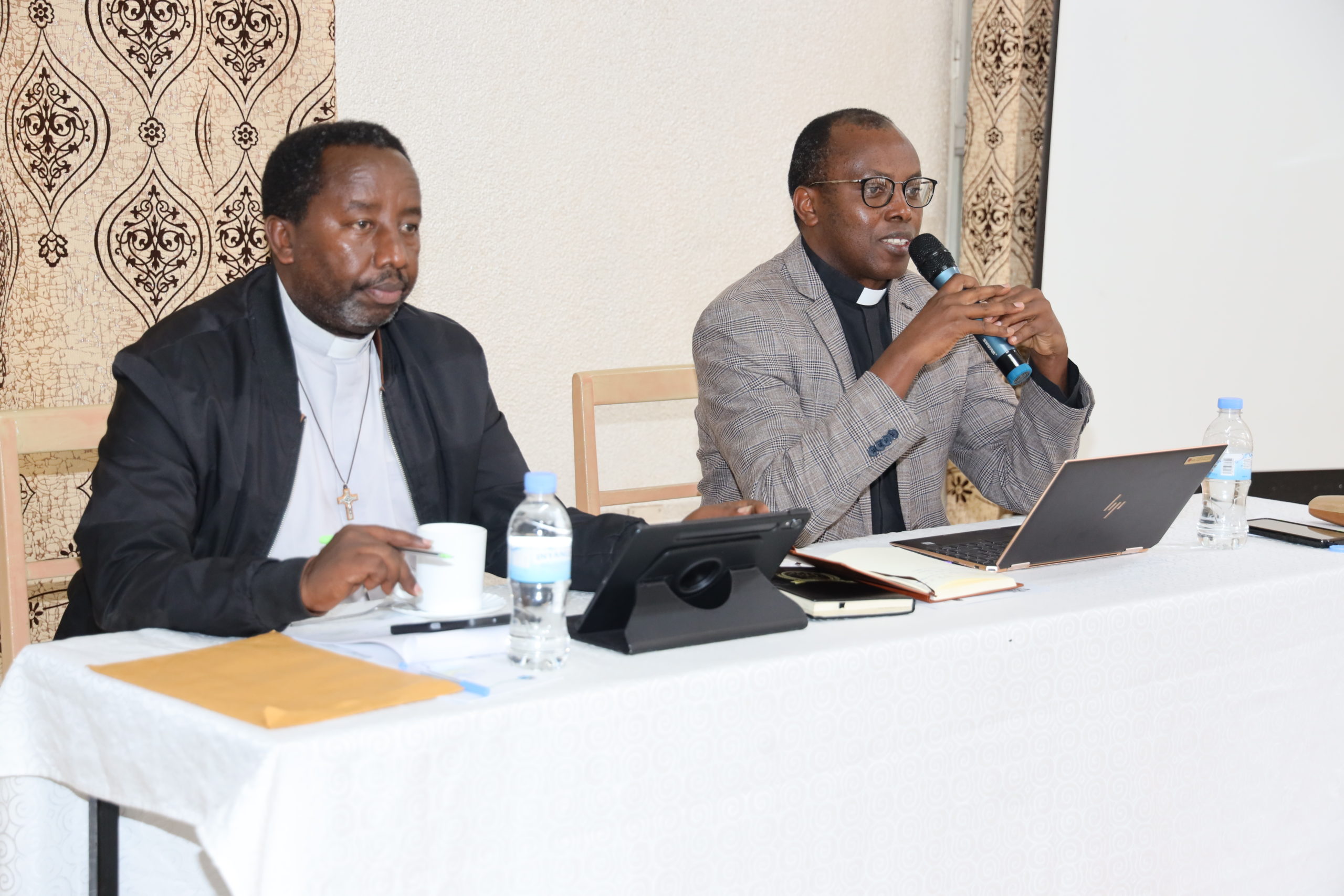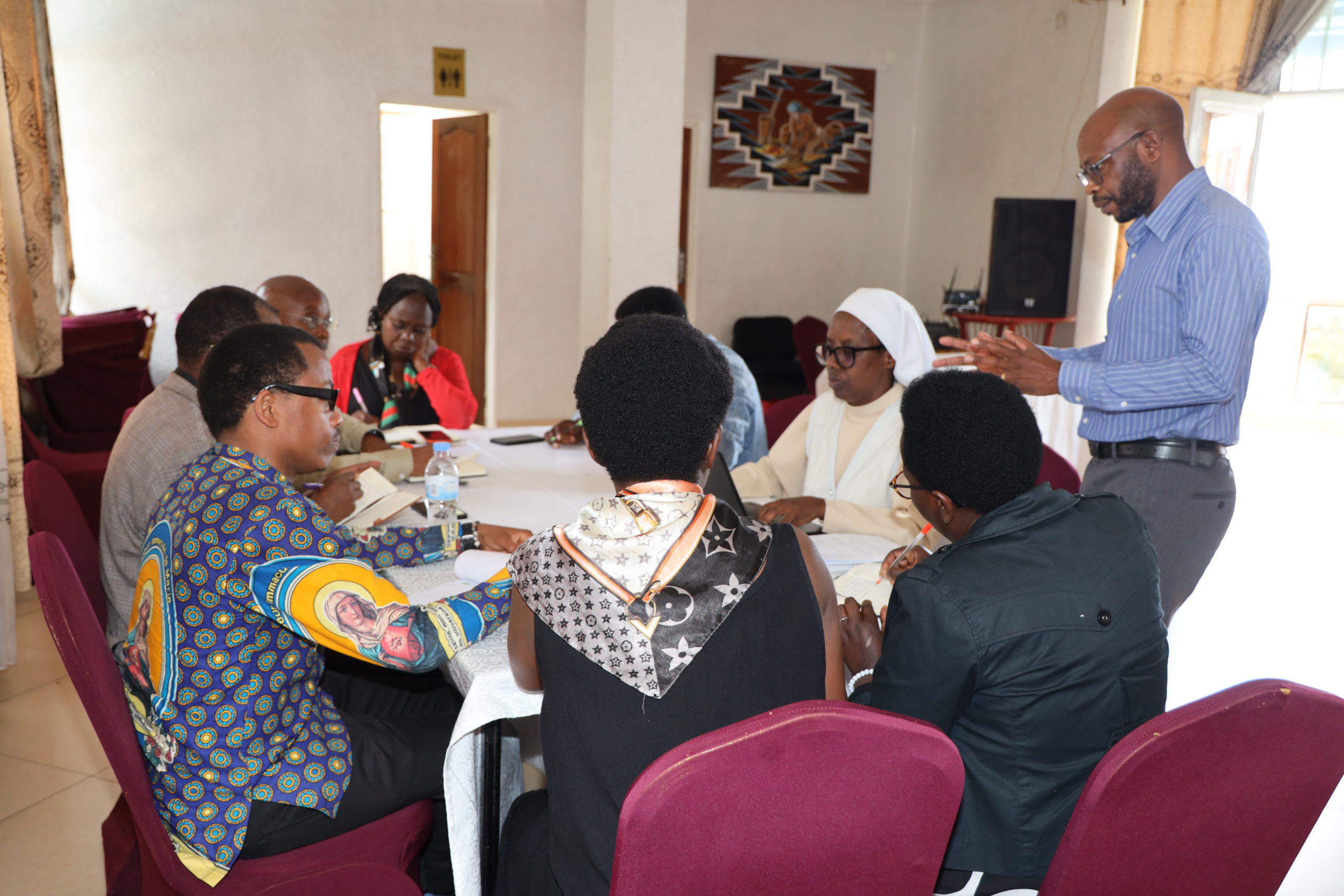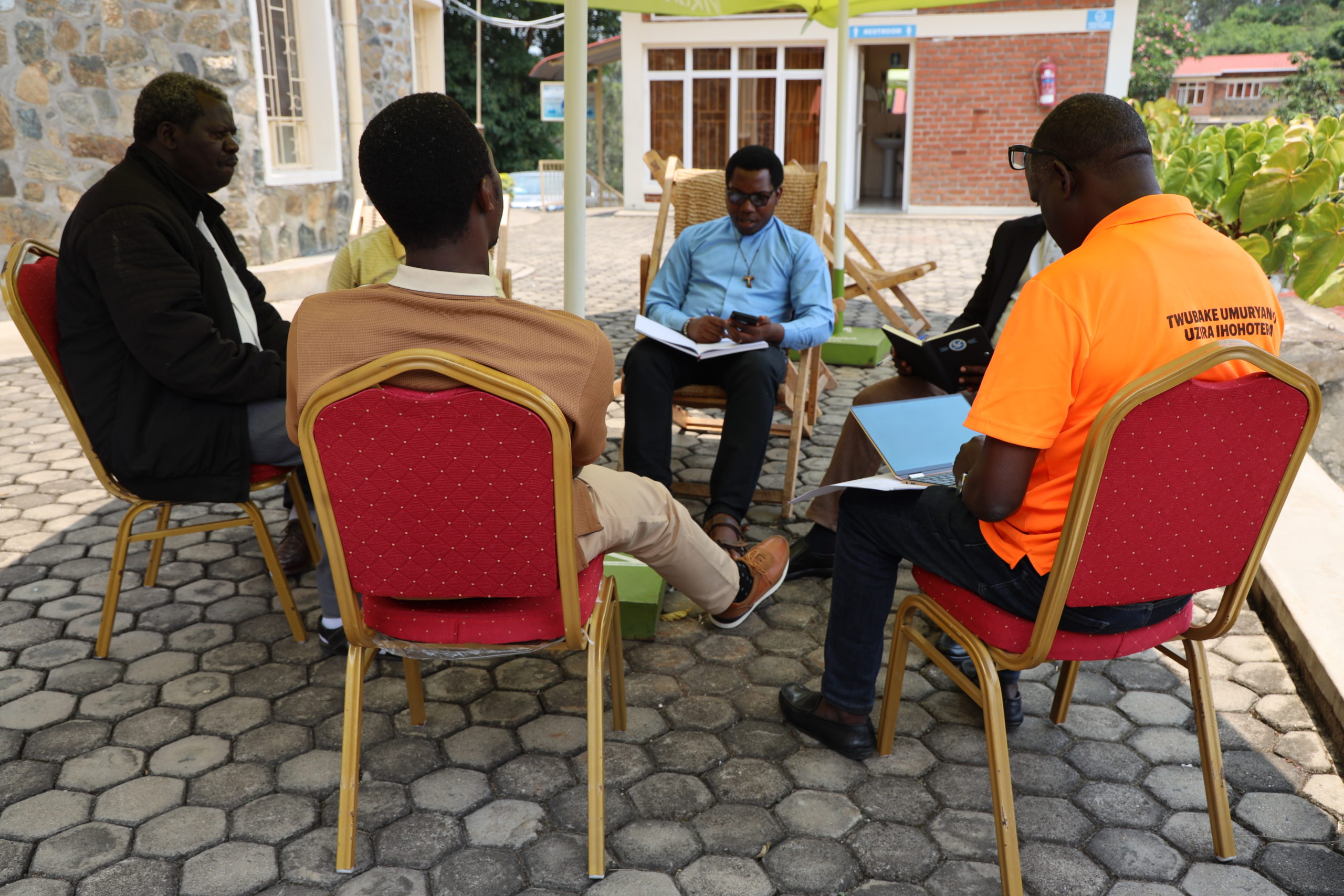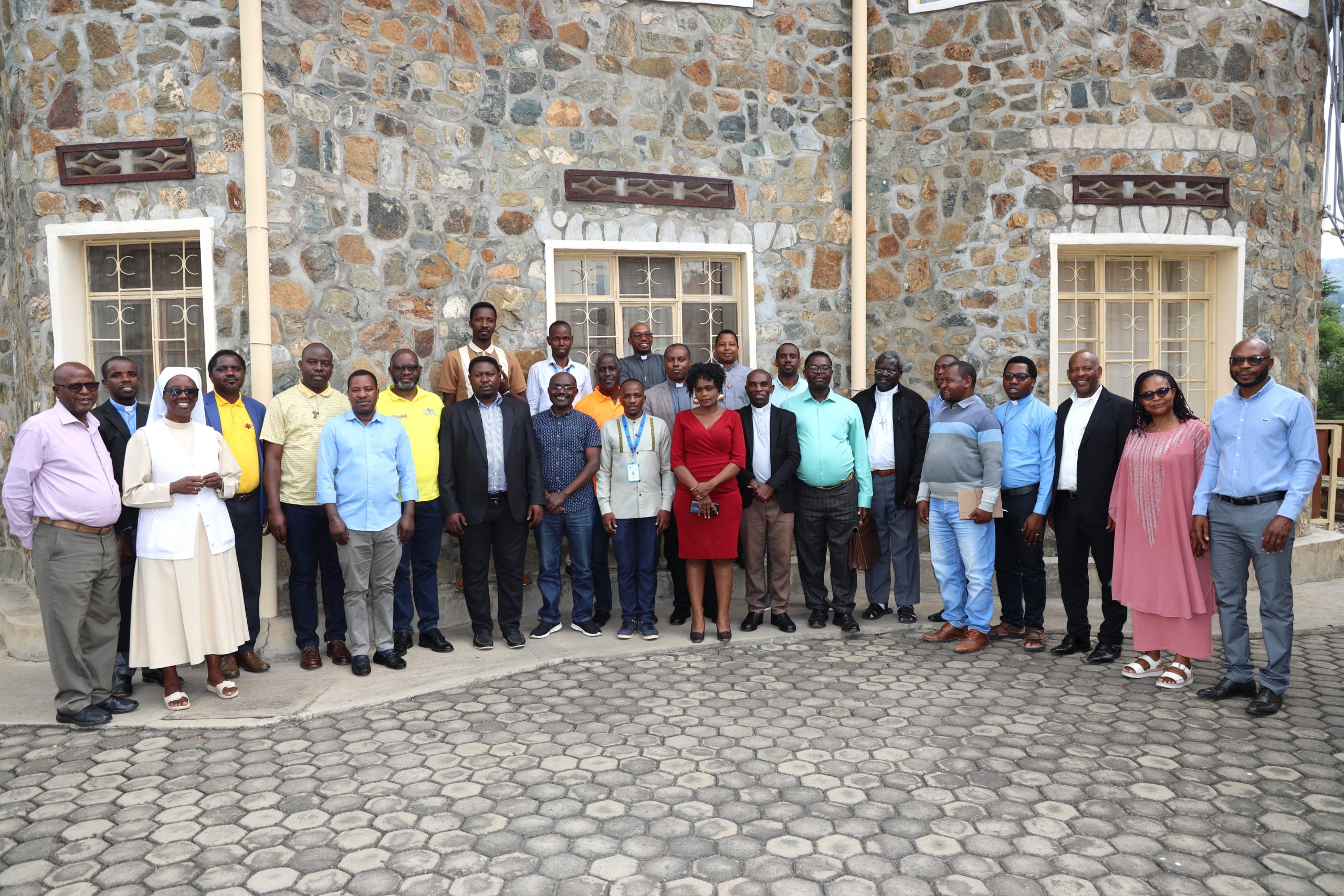Recognizing the role of synergy and collaboration in promoting sustainable impact, Caritas Rwanda organized engagement meetings with priests from the Nyundo Diocese, covering both Caritas Nyundo/Kibuye and Caritas Nyundo/Gisenyi zones respectably on 11th and 12th September 2025. These meetings brought together almost 60 participants, including priests, diocesan Caritas and Caritas Rwanda staff.
In his speeches (September 11 and 12, 2025), Father Oscar Kagimbura, the Secretary General of Caritas Rwanda reminded that Caritas’ mission focuses on love, on the Gospel, emphasizing that this meeting aimed to jointly examine how synergy and collaboration between Caritas and Church structures (from the Parish to basic ecclesial communities) can be strengthened so that their activities are productive.
Father Oscar Kagimbura, also reminded this passage from the Strategic Framework of the Caritas Confederation[1]: “Inspired by the Gospel and experiences of people experiencing poverty, we are part of the universal mission of the Catholic Church to:
- Save lives and reduce risk by building resilient communities, and responding quickly and effectively to humanitarian crises (Assistance, Social Welfare and Health);
- Transform lives and communities through the promotion of integral human development, the care for creation, the restoration of peace and social justice (Development, Peace and Justice);
- Call for a better world by amplifying the voice of those we serve, and convening people to advocate and act (Advocacy).”
The Secretary General of Caritas Rwanda also recalled the two pillars on which Caritas is based, namely (i) professional preparation and (ii) formation of the Heart as mentioned in the Encyclical of Pope Benedict XVI Deus Caritas Est (God is Love)[2], published on December 25, 2005 (page 31). In this regards, the Secretary General of Caritas Rwanda reminded all Caritas staff members to adopt the Caritas Spirit, which is a spirit of compassion towards people they serve.

The meetings were also an occasion for explaining more about Caritas Nyarwanda. As it was said, their contributions serve to assist vulnerable populations who need emergency support during disasters without waiting for external support.
SWOT analysis in groups
Participants worked in groups to conduct a SWOT (strengths, Weakness, Opportunity and Threats) analysis of current practices. They discussed what they should stop doing, what they should improve, and what new ideas they should start in regard to communication, advocacy, synergy, and collaboration.

The groups recommended to (1) develop a list of people who have been assisted by Caritas and the implementation of the Garukushime initiative, (2) to raise awareness on Caritas Spirit among participants, and (3) to conduct a regular campaign for the Charity Month to reach children before they go in holidays and farmers during harvest seasons.
The recommendations also included (4) intensifying reporting efforts about the use of the Charity Month contributions in all Caritas structures, (5) strengthening collaboration between Caritas structures, (6) fulfilling our responsibilities as part of Caritas instead of acting as project employees, and (7) promoting the visibility of Caritas activities in the development and health sectors.

In addition, participants requested that (8) staff in Caritas projects better reflect its true identity and collaborate with Caritas structures in the implementation of these projects, and that (9) the capacities of development and health mobilizers be strengthened throughout the implementation of projects, so that they can follow up with participants even after their implementation.
[1] https://www.caritas.org/wordpress/wp-content/uploads/2023/06/EN22GA-04_Strategic-Framework-.pdf page 5
[2] https://www.vatican.va/content/benedict-xvi/en/encyclicals/documents/hf_ben-xvi_enc_20051225_deus-caritas-est.html


